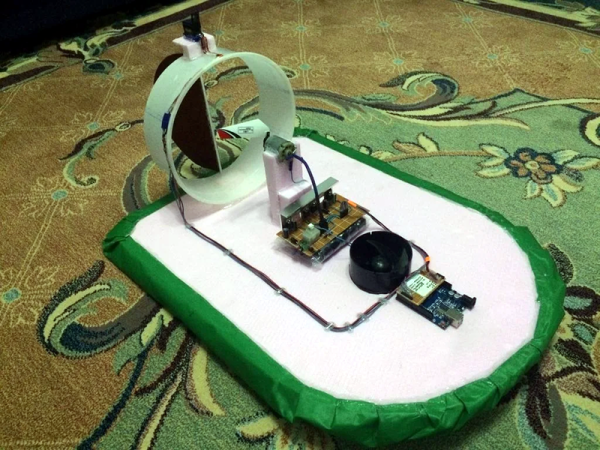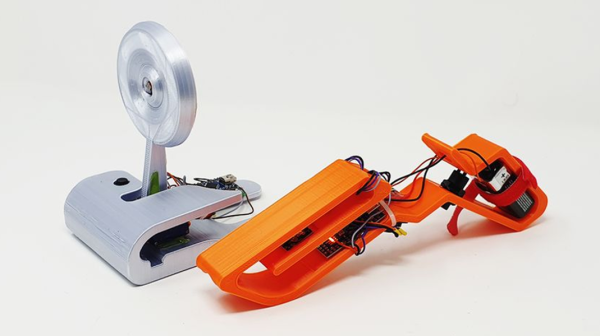If we are to believe many science fiction movies, one day throngs of people wearing skin-tight silver spandex jumpsuits will be riding around on hovercraft. Hovercraft haven’t really taken the world by storm, but [Fitim-Halimi] built his own model version and shows you how he did it. You can see the little craft moving in the video below.
In theory, a hovercraft is pretty simple, but in practice they are not as easy as they look. For one thing, you need a lot of air to fill the plenum chamber to get lift. That’s usually a noisy operation. The solution? In this case, a hairdryer gave up its motor for the cause. In addition, once floating on a near-frictionless cushion of air, you have to actually move without contacting the ground. Like many real hovercraft, this design uses another fan to push it along. You can see in the video that the designer uses Jedi hand motions to control the vehicle.





















